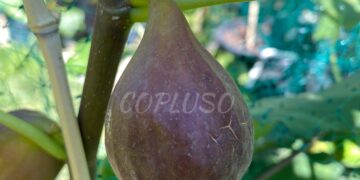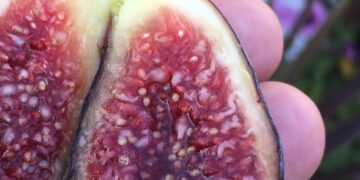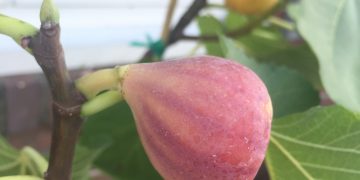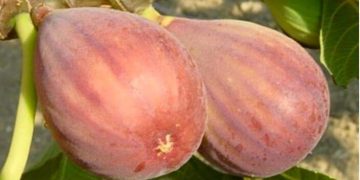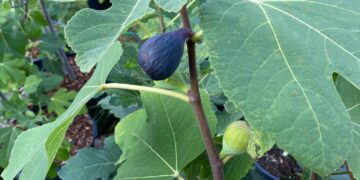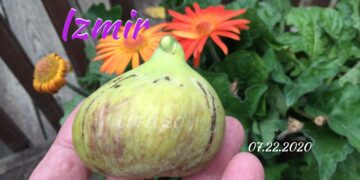Fig trees can produce wonderful tasting fruits. However, unlike other fruits that can ripe
after picking, figs have to be almost fully ripe when picked to have their full flavor. If you have a short growing season this can
be a problem as some varieties might take more than 90 days to mature since the fruit
is formed.
Also, since some of the best tasting varieties
may only start to set fruit in mid-summer, maturation can come in late September, October
or even later. The cold weather in some areas or rain might
prevent fig maturation or spoil the fruits.
One of the options to try to induce early
fruit formation is pinching the tip of fruiting branches. Nevertheless, in some cases, pinching is not
recommended. So, in this video, I will try to explain the
situations where pinching might help your fruit trees, and not only in early fruit set.
But first, let’s look at the physiology
of a plant and in what way pinching changes it. When you pinch the tip of a branch it will
stop vertical growth and will promote side branching. This happens because removing the tip will
also remove the cells that are producing auxins, a type of plant hormone, in that meristematic
growth area.
This group of plant hormones produced in the
tip of a branch, promote stem elongation and will also inhibit the growth of lateral buds. This is called apical dominance and will limit
the development of lower branches, concentrating the energy for growing in the main branch.
Free from that inhibition through pinching,
the branch lateral meristematic areas, near the lower nodes, will start to grow and produce
new branches. Will this also produce new fruits in those
areas? Not necessarily.
Only if you have two bumps in the leaf axil,
you can be sure that one will produce a new branch and the other will produce a fig. By removing the vertical growth, pinching
will allow the plant to concentrate all its energy in those lateral buds and so, can induce
early fruiting.
Inducing early fruiting is ideal if you have
a short growing season or you are growing fig varieties that have very long maturing
periods. So, pinching your fig trees can be used in
several ways and for several different reasons.
First, it can be used as a way to induce new
branching. Pinching is a great way to force the development
of lateral branches and help shaping a young tree. Pinching can also be used to eliminate apical
dominance of the most vigorous branches, resulting in a more balanced tree.
And finally, pinching is most widely used
to induce early fruiting. When you pinch, remember that you will be
stopping the growth of that branch and you will be promoting the growth of lower lateral
branches.
If your growing season is not long enough
this may produce lots of small diameter branches, which is not ideal if you later want to cut
some nice thick dormant cuttings. From figlet to maturity most varieties will
take a minimum of 60 days.
But others, like Figo Preto, might take more
than 90 days depending on local conditions. Late maturing varieties are the ones where
pinching might be most useful, particularly if you have a shorter growing season.
If you have two bumps in the leaf axil you
can be sure that pinching will induce the growth of new figs. This happens because when you have double
bumps in the leaf axil, one will produce a new branch (the vegetative bud) and the other
will produce a fig (the fruiting bud).
If you only have one bump, that bud will probably
just grow into a new shoot, so pinching will not help in producing new fruits. You can pinch along several weeks during the
growing season. Remember that you don’t need to pinch all
the branches at the same time, and you sure don’t want to do that.
First, remove the tip of the strongest, higher
branches. This will promote the growth of the weaker
ones, promoting a more balanced tree. How long should a branch be so I can be able
to pinch it? As a rule, avoid pinching branches that have
a small number of new wood nodes.
We are talking about same year, green growth. Last year growth has turned brown and has
hardened. Remember that most fig varieties will only
produce a main crop, in same year, new growth. If you pinch a branch too early, that branch
growth will be too small, and the resulting number of new fruits quite scarce.
So, has a rule of thumb, its common to pinch
a new branch only when it has at least 5 to 6 new nodes. But, that really depends on the time of year. If its mid-June and your fig tree doesn’t
have small figlets, pinching might produce mature figs by late September, depending on
the variety.
In some areas, this can still produce nice
figs, before colder and rainy weather prevents your figs to mature fully and get their best
taste. So, even if the pinched branch has a small
number of nodes, it might be worth pinching it to produce a few figs, that might still
mature in time.
Some of these branches will only be used to
produce figs that year and will not be part of the trees permanent structure. Beware that Pinching most branches, every
year, will result in lots of lateral growth and too many, small, concentrated, weak branches.
This will reduce light and air flow to the
other branches and might make fruit maturity more difficult. This might also produce a more unbalanced
tree that can be more susceptible to some diseases. All these problems can be corrected later,
by pruning, so don’t worry too much about that, when pinching.
Pruning can and should be used at a later
date to form the tree in the desired shape and size. It will reduce the concentration of these
small branches, avoiding all those problems. Pinching should not be used in all situations
and is best avoided in some cases.
For instance, don’t pinch if your tree is
too young. Let the tree grow and establish strong branches
and roots before worrying about fruit production. Another reason to avoid pinching individual
branches might be if your tree is well balanced and no individual branch is too strong and
excessively vigorous.
If you decide to pinch in this situation,
pinch all the branches with the same development, to avoid unbalancing your tree. Avoid pinching when your branches already
have small figlets forming, early in the season.
These figs will mature naturally and pinching
will not help in any way. Pinching is also not needed for most varieties,
as they develop figs without this procedure, at their own pace. Pinching will also disrupt natural branch
growth and can promote excessive branching.
So, it should be avoided if you have a normal
growing season and most fig varieties mature well without this procedure. Finally, you should also avoid pinching, if
the branches of your fig tree, show only one “bump” in the leaf axils.
This means that the chance of promoting early
fruiting by pinching is small, as most of the buds are probably vegetative and will
produce new shoots, not figs. Thanks for watching













